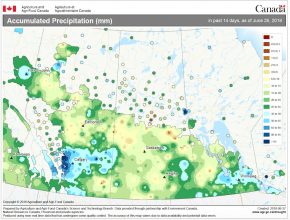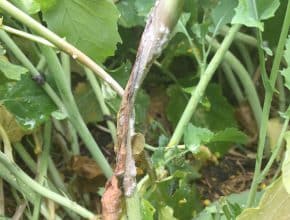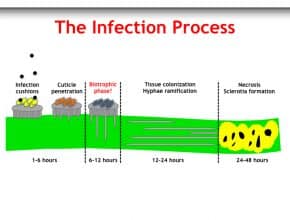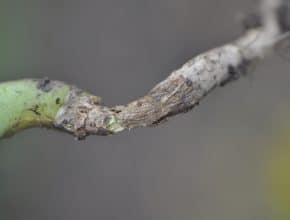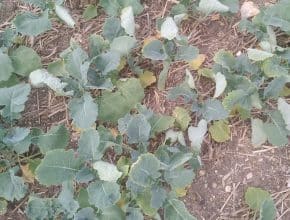Five questions that could help with your sclerotinia spray decisions…
June 27, 2018 – Issue 13
-
-
Soil moisture and rainfall leading up to flowering is an indicator of sclerotinia stem rot risk. Rain in this pre-flower period will have apothecia emerging and spore release occurring around the time of early flowering. This map from AAFC's Agroclimate website shows precipitation accumulation across the Prairies from June 12-26…
-
-
The timeline from when sclerotia in the soil first take on moisture, to apothecia germination, spore release, petal infestation, petal drop and finally canola plant infection takes up to three weeks. This graphic shows the final 24 hours as the fungus on decaying petals enters the plant and creates a lesion…
-
-
Too windy. Too wet. Sometimes both. This pushed back a lot of weed management and some fields are still not sprayed. In this situation, intense weed pressure can reduce yields by 20%, 30%, 50%... That's why early weed control has a huge positive effect on profitability, but late control is better than nothing. Late control can stop the yield loss,…
-
-
-
Michael Harding with Alberta Agriculture & Forestry recently compared 10 disinfectant solutions to see which is best to kill clubroot spores on machinery, tires and boots, etc. Four of those 10 products achieved 95% inactivation of clubroot resting spore viability, qualifying them as effective. Of the four, bleach achieved the 95% threshold at very low concentration (2%) and bleach is…

